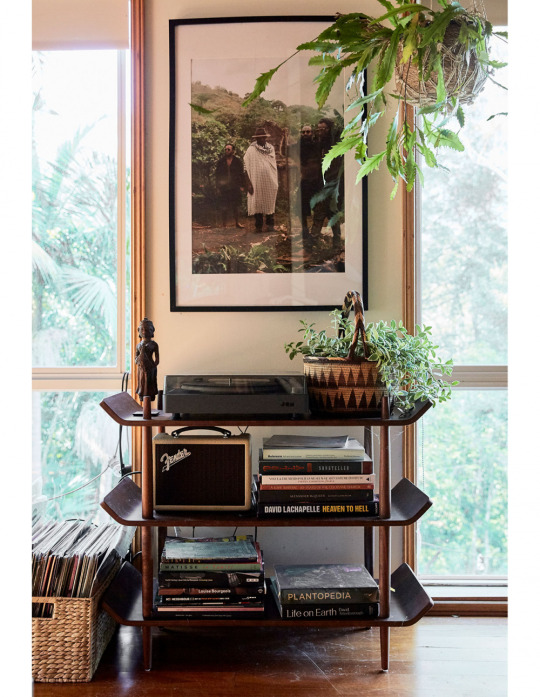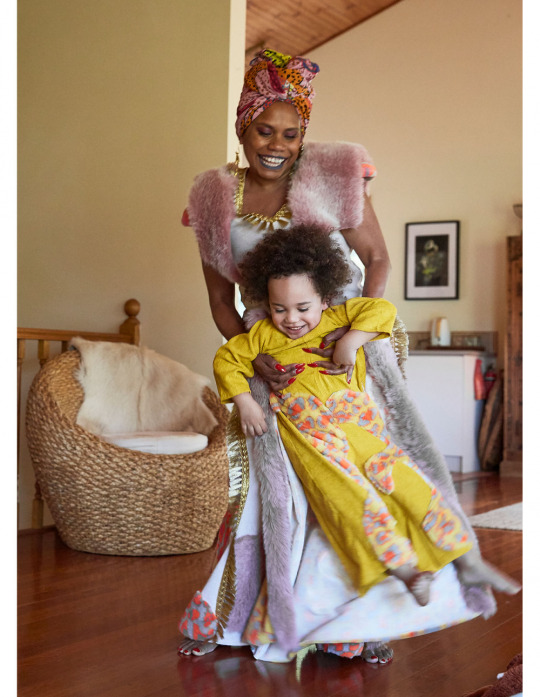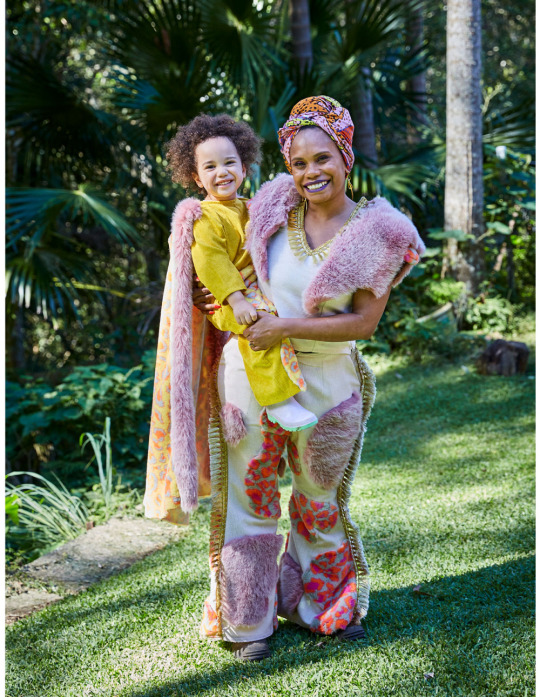#Sonic Solace Australia
Text
Sonic Solace Tinnitus - Ingredients Pros & Cons
Sonic Solace Review A quick point before we start, I am not a doctor and do not claim to be. Any special diet requirements you have you should take up with your dietician or medical professional. Sonic Solace Review The foods I talk about here are foods that I find beneficial to me to avoid. My name is John and I suffered with Sonic Solace Review tinnitus for ten years. Over this time I have found what works and what does not with helping tinnitus. My website was setup to help those who suffer with a series of self help guides Sonic Solace Review.

To Know More Visit Official Website: - Click Here
Sonic Solace Review Tinnitus is a condition where you here a constant ringing in your ears. You may also experience headaches and dizziness with it. The condition itself is not life threatening, it is just very annoying. I have to run a fan on my night stand at night when I sleep, to provide some noise.
In other words, you can't trade your worries for a change in destiny. No one is going to re-write the books just because you like to worry. I found the best way to deal with worry is to obtain the basic facts and determine what the core of my worry is.
But, do you know the only problem with this kind of thought process? None of it would make my tinnitus or my life any better? And, that's when I decided to do something about it. I realized that if I could not cure my tinnitus then I would have to cure my life instead. How did I do this? How can you do this?
Wax build-up in the ears causes ear infection too. When those ear fluids come in contact with dirt, wax forms. If the ear is not cleaned regularly, wax can buildup to the extent it causes major problems.

To Know More Visit Official Website: - Click Here
I was so busy fighting the Tinnitus and struggling to make it through the day, I barely noticed my wife's struggle with my Tinnitus too. I had no energy for her personal fight to keep me alive, or to fight the Canadian Hearing Association when they told me they couldn't measure the volume of the noise I hear (higher than their instruments could measure). I had no strength to fight the audiologist who sold me "white noise/masking hearing aids" that, despite my discipline, hope, and full cooperation, didn't work for me. I didn't have the energy to fight other health professionals who tried to help but whose good ideas didn't work. They got my money; I kept the tinnitus.
Before you lie down, review your day and think of ways to resolve any problems you may have encountered. When you don't get enough rest, your body does not have the chance to regenerate and heal.
In fact, you can make your own natural products to help your tinnitus at home. Everything can be found in the grocery store for under $10. Geoff Barker, an renowned tinnitus researcher, developed a guide to help you cure your tinnitus. I highly recommend checking it out because it has helped thousands worldwide.
Visit Here Also:-
#Sonic Solace#Sonic Solace Reviews#Sonic Solace Ingredients#Sonic Solace advantage#Sonic Solace Tinnitus Supplement#Sonic Solace Cost#Sonic Solace USA#Sonic Solace Canada#Sonic Solace Australia#Sonic Solace New Zealand#What is Sonic Solace?#Is Sonic Solace Safe?
0 notes
Text
"Dad": A Musical Homage to Fathers by Gary Dranow
Gary Dranow and The Manic Emotions' single "Dad" is more than a tune—it’s an emotional voyage that tugs at the heartstrings with its sincere homage to paternal bonds. Engulfed in rock sensibilities refined by an essential storytelling authenticity, this piece emanates warmth, wisdom, and the indelible marks of familial love.
https://open.spotify.com/track/6MgqQE4xsfrn070tw2GzQT
Crafting this poignant narrative are Gary Dranow alongside bandmates from corners as varied as Park City (Utah), Melbourne (Australia), and Ukraine—Chris Zoupa's electrifying guitar riffs, Jason Jones’ deep-toned bass pulses, Roman Burda's evocative violin strokes along with Klim Apalkov and Roman Kuznetsov adding layers of intricate sonic textures. This international assembly isn’t just about showcasing their geographical diversity; it speaks volumes of their unity in creating music that resonates universally.
"Dad" draws its inspirational soul from a letter — possibly one filled with reflections on love lost and found through the eyes of a son to his father Harold. It’s this source material that imbues every chord change with raw emotiveness matched only by lyrical narratives reminiscent of legendary raconteurs like Bob Dylan or Neil Young—a story set against a backdrop where each note finds its place within the grand tapestry woven out of profound human emotions.
The strength lies not solely in impeccable musicianship but also shines brilliantly through great male vocals that serve as both narrator and confidante. They guide listeners across trails blazed by affectionate recollections and lessons inherited from years under paternal watchfulness—a voice speaking directly to our shared experiences around family ties.
[caption id="attachment_54320" align="alignnone" width="768"] "Dad": A Musical Homage to Fathers by Gary Dranow[/caption]
By blending rock’s inherent intensity with flourishes that hint at Eastern European melodic richness alongside good old-fashioned Australian straightforwardness, “Dad” transcends musical genres. It instead stakes its claim firmly in hearts willing to journey back home musically—and emotionally—to spaces filled by parental figures’ silhouettes cast long into adulthood realms.
In essence, Gary Dranow And The Manic Emotions have not merely composed another track; they've painstakingly painted auditory canvases where notes curve gently around memories like comforting embraces or echoes growing faded yet vital still amid life’s cacophonies. Their single stands testament—not simply to creative prowess—but more importantly - encapsulates those unspoken chords struck between fathers and sons everywhere, turning universal truths into symphonies felt deeply beyond mere hearing.
Indeed “Dad” goes beyond melody or harmony—it whispers tales deeper than lyrics could tell alone while imploring us all to find solace in connections timeless against temporal lulls—an endeavor irrefutably successful ensuring it reverberates long after the final note fades into silence.
Follow Gary Dranow on Website, Facebook, Twitter, Bandcamp, YouTube, Instagram and TikTok.
#Music#DadAMusicalHomagetoFathersbyGaryDranow#Dad#DadalbumbyGaryDranow#DadbyGaryDranow#DadfromGaryDranow#DadGaryDranow#GARYDRANOW#GaryDranowDad#GaryDranowdiscography#GaryDranowdropsDad#GaryDranowmusic#GaryDranowmusicalartist#GaryDranowmusicalband#GaryDranownewsingle#GaryDranowoutwithDad#GaryDranowprofile#GaryDranowreleasesDad#GaryDranowshareslatestsingleDad#GaryDranowsinger#GaryDranowsongs#GaryDranowunveilsnewmusictitledDad#GaryDranowvideos#GaryDranowwithDad
0 notes
Text

Diving into the Mysterious World of HTRK
In the vast realm of music, there are certain bands that captivate our hearts and souls with their unique soundscapes and ability to evoke deep emotions. One such band that effortlessly transports listeners to a different dimension is HTRK. With their haunting melodies, ethereal vocals, and experimental approach, HTRK has carved a distinctive niche in the music industry, leaving an indelible mark on those who dare to embark on their sonic journey.
HTRK, originally hailing from Melbourne, Australia, consists of core members Jonnine Standish and Nigel Yang. Formed in 2003, the band emerged from the ashes of the post-punk scene, exploring a wide range of musical genres such as shoegaze, minimal wave, and electronic music. However, it is their ability to seamlessly fuse these genres together that sets them apart.
One cannot help but be enamored by HTRK's sonic landscapes. Their music possesses an elusive quality that gracefully balances fragility and strength, melancholy and hope, and introspection and catharsis. Each composition feels like a sonic tapestry, intricately woven with delicate melodies, atmospheric synths, and sparse percussion. Their minimalist approach allows ample space for Standish's mesmerizing vocals to float effortlessly, like whispers in the night, wrapping the listener in a warm embrace.
HTRK's lyrics are equally enigmatic and thought-provoking, delving into themes of desire, longing, loss, and the complexities of human emotions. Standish's poetic words often invite introspection, painting vivid pictures in the mind's eye. Their lyrics create a sense of intimacy, as if we are being granted access to the innermost thoughts and emotions of the band.
Through the years, HTRK has released a series of spellbinding albums, each one unveiling a new layer of their artistic evolution. From their debut album, "Marry Me Tonight," to the hauntingly beautiful "Psychic 9-5 Club," and the introspective masterpiece "Venus in Leo," their discography reflects a constant pursuit of sonic experimentation and self-discovery.
Beyond their recorded work, HTRK's live performances are a testament to their ability to create an immersive experience for their audience. Their shows are a sensory feast, where music intertwines with visual art, projections, and atmospheric lighting, blurring the boundaries between the physical and the ethereal. Attending an HTRK concert is akin to stepping into a dreamlike world, where time ceases to exist and emotions flow freely.
As listeners, we are fortunate to have HTRK grace our ears and hearts with their captivating music. They possess a rare ability to transport us to a realm where emotions run deep, and introspection becomes an art form. HTRK's sonic tapestries resonate with our innermost desires, fears, and joys, reminding us of the power of music to touch our souls and connect us on a profound level.
In a world that often feels chaotic and overwhelming, HTRK's music serves as a sanctuary, a refuge where we can lose ourselves and find solace. It invites us to embrace vulnerability and explore the depths of our emotions. So, if you haven't yet embarked on a journey with HTRK, I encourage you to immerse yourself in their haunting melodies and let their sonic magic take you on an unforgettable adventure.
1 note
·
View note
Text
Singer-Songwriter-Survivor Ngaiire On Motherhood, Music + Building From The Rubble
Singer-Songwriter-Survivor Ngaiire On Motherhood, Music + Building From The Rubble
Family
Ashe Davenport

Singer-songwriter Ngaiire her three-year-old son, Dovey. Photo – Alisha Gore for The Design Files.

Ngaiire really embraced the concept of self-care during the pandemic. ‘I pretty much live and breathe my work. But then COVID hit, and I started to see the value of creating little nooks around the house, to read in and be still,’ she says. This corner is one of them. Photo – Alisha Gore for The Design Files.

Ngaiire’s mum (who lives with them in their house on the Central Coast!) made Ngaiire and Dovey’s INCREDIBLE matching outfits from Spotlight fabrics. Photo – Alisha Gore for The Design Files.

During a period of intense trauma and turbulence in Ngaiire’s adolescence, she found solace in her mum’s CD collection, which featured Mariah Carey, Bob Marley and Alicia Keys. Photo – Alisha Gore for The Design Files.

‘Every day I worry, “Am I doing too much work and (giving) too much energy for my music and not enough with him?” The balancing can be agonising!’ says Ngaiire. Photo – Alisha Gore for The Design Files.

Ngaiire is a design and architecture obsessive! Photo – Alisha Gore for The Design Files.

‘I never imagined that, despite how traumatic my birthing story was, the miracle of becoming a mother literally plugged me into a creative life source I never knew I could access. (It) felt like a tap had been turned on, and the parameters of my creativity broadened. The irony of having your motivation to create triple (while) having your energy levels completely diminished at the same time can feel like a cruel joke!’ Photo – Alisha Gore for The Design Files.

Photo – Alisha Gore for The Design Files.

Up until recently, Dovey’s favourite song was the Harry Styles banger ‘Adore You’. Now, it’s ‘Boogie Wonderland’ by Earth, Wind & Fire. Photo – Alisha Gore for The Design Files.

Ummmmm, how beautiful is the fam’s Central Coast pad?! Photo – Alisha Gore for The Design Files.

‘The times Dovey has seen me sing he gets very still, which is great, because he’s never that still unless he’s asleep! It’s like he understands something special is happening,’ says Ngaiire. Photo – Alisha Gore for The Design Files.

Ngaiire and Dovey’s lockdown activity was planting seedlings. Dovey’s now seen a full year of crops grow! Photo – Alisha Gore for The Design Files.

Like mother, like son! Photo – Alisha Gore for The Design Files.
Life has tried to pull Ngaiire under on multiple occasions. At three-years-old she was diagnosed with cancer of her adrenal glands. She’s spoken about the friends she made on the oncology ward, and sung for the ones she lost. At age 12, in her homeland of Papua New Guinea, Ngaiire survived a volcanic eruption that covered her house in ash and separated her from her mother for several months.
‘Aren’t you supposed to be dead?’
The question was asked by her nephew in a dream that would become the basis for her song ‘Once’ (track two on her hit 2016 album Blastoma). In the music video, Ngaiire travels through the carriages of a moving train, each one representing a chapter of her life. In some she’s being pulled at, stripped, hospital-gowned. In others she is fluid, in charge and perfectly synchronised.
She’s risen from the ashes again and again, caped in fuchsia and gold.
This is an edited and condensed version of our conversation, which wasn’t so much about where she’s been, but where she is now, safe in the home she built from the rubble.
Can you please tell me everything about this outfit?
When I found out Nadav and I would be doing this shoot, I died. I’m a lowkey hard out nerd for design and architecture. I’ll sadly admit that Design Files is probably one of my top 3 most visited IGs daily. I’m OBSESSED.
When I got the news, I immediately sketched up two outfits for Nadav and I, went to Spotlight to get some fabric, then commissioned my mother (who is currently living with us) to sew them. Mum’s been [making my clothes] for decades, so it wasn’t our first rodeo. It helped that she’d already set up a mini sewing factory downstairs for our little toddler clothing label, Dovey Nero, which we’ve been slowly building and taking our time testing the market with. What Dovey is wearing is a little taste of what we’re currently working on.
What’s it like sharing so much of your story in your music?
Being a singer, my whole instrument is very much connected to how I’m feeling and what might’ve happened to me that morning or that week. When you’re working in an office, you’re expected to leave your personal issues at the door. But when it comes to music, it’s about finding that balance, and utilising your emotional backlog to tell a story. The wonder of songwriting is that your story becomes someone else’s anchor, or road map, to joy, relief or even salvation.
How do you manage all of that emotional expense? Are you drained AF?
I don’t know how I manage it. It can be really taxing, especially being a mama. I have a three-year-old, which can be a lot, both physically and emotionally. Every day I worry, am I doing too much work and (giving) too much energy for my music and not enough with him? The balancing can be agonising!
How do you get out of the working parent guilt loop? Is there something you do that’s just yours?
I pretty much live and breathe my work. But then COVID hit, and I started to see the value of creating little nooks around the house, to read in and be still. It takes me forever to get through a book these days, but if I can just steal 5-10 minutes, read some literature, even just look out the window at the bush we live behind. The concept of self-care is something I’ve definitely come to understand more during the pandemic.
How does the parenting load get divided in your house?
My husband’s carrying a lot of the load right now. He’s a designer by trade and his workload varies. It’s amazing that it’s worked out the way it has, with me having such a big work year ahead. He’s doing most of the parenting while I release this album.
In terms of what daycare days look like, I mean, we always swear to wake up earlier to drop Nadav and start our work days, but it’s really hard sometimes. Especially if he wakes up a few times at night and you just want to doze that little bit longer!
How does motherhood compare to your expectations of it?
It met ZERO of my expectations! In fact it surpassed any idea I possibly had of how hard, but also how rewarding and life-altering it would be. It elevated the respect I had for myself as someone who was (able) to bring life into the world.
Being a sickly child, my chances of getting pregnant were considered low. I never imagined that despite how traumatic my birthing story was, the miracle of becoming a mother literally plugged me into a creative life source I never knew I could access. (It) felt like a tap had been turned on, and the parameters of my creativity broadened.
The irony of having your motivation to create triple (while) having your energy levels completely diminished at the same time can feel like a cruel joke!
How does Nadav respond to your music?
Singing is a deeply spiritual thing for me. It connects me to something that not a lot of people have access to, and we as artists kind of become the conduits for that for our audience.
The times Dovey has seen me sing he gets very still, which is great, because he’s never that still unless he’s asleep! It’s like he understands something special is happening. I have no idea what he’s taking in, but based on what I get from music, I can only assume he’s taking on a multitude of information. Maybe on some level he’s understanding how the world works. How to relate to people, and how deep that connection can be.
What messages do you hope a grown up Nadav will take from your songs?
I want him to grow up feeling like he can do anything he wants to do in this life, whether it’s music or something else completely opposite. I hope he always stays in touch with that reverence for music and that he knows that he is very privileged to be able to ingest it in a way that not a lot of kids are afforded. I hope he also still feels like I’m around for him through my songs even when I’ve passed on. And that I did the best I could despite my challenges so he (could) too.
Did you find that deeper level through music or did you already know about it and that’s what led you to music?
Before I’d hit 12 or 13, I’d been through so many huge life traumas. I had cancer, and my family lost their property and all their belongings to a major volcanic eruption. We were living in the bush, separated from my Mum for a fair while. She was looking for us frantically, but couldn’t contact us because everything was down, the phone lines, everything. She reached us through emergency announcements over AM radio, which a relative luckily caught (wind) of. The organisation she’d been working for chartered a plane, which landed in a nearby clearing and zipped us out of there to the mainland. Shortly after that, my mother found herself in an abusive second marriage, which was pretty traumatising for us, but 100% more so for her.
At that point in my life, I found solace in Mum’s CD collection. I’d listen to Mariah Carey on repeat, memorising every word from inside the cassette cover, and anything else (from) Bob Marley to Deep Forest (laughs). When we moved to Australia, I took up music at school. I sang ‘Fallin’ by Alicia Keys in front of the school assembly, (which) was a big moment. From that point, I understood I had something that affected people a certain way, beyond the noises that came out of my mouth. I knew I had to continue chasing music.
What can we expect from your upcoming album? What does it represent for you?
It’s an actual journey, not in a cliché way, but in that every song on it serves as an integral part of the sonic trajectory. You appreciate each song more if you hear them in context of the whole body of work, and I think that’s the beauty of what Jack Grace (my co-producer) and I are good at doing as a team – making music that breathes as a complete organism as it does individually.
The album represents a whole life cycle for me. I started the album off the back of touring the last one (Blastoma) – before I got hitched and before I got knocked up (laughs). It was an attempt to present my Papua New Guinean heritage in a new light, so that I could feel more understood within my industry – something I never fully felt. Little did I know that the whole process, 4 years on, would propel me through a maze of re-discovery of who I really am and who I want to be. I care less about what people think a Papua New Guinean woman should be within an western context now then when I first started this project, because that’s everyone else’s problem. This record has become a celebratory affair of my love for PNG, people and myself. And at the end of the day, that’s what motivates people to make the decisions (throughout) their lives.
FAMILY FAVOURITES
Favourite cafe?
Like Minds in Avoca
Weekend away?
It hadn’t really been a thing for us. We used to have accidental getaways through my work. So before COVID hit, we’d all get to hang out interstate if I had shows. Now we bush walk in places like Maitland Bay or the Pink Caves up the coast.
Rainy day activity?
We raised a lot of seedlings during lockdown to plant in the garden. Dovey got really good at planting seeds inside, where it’s prime seedling growing heat. He’s seen a full year of crops already, which is pretty cool.
Most played song?
Until recently it was Harry Styles, ‘Adore You’. Dovey requested it ALL. THE. TIME. But now it’s moved to ‘Boogie Wonderland’ by Earth, Wind & Fire.
Sunday morning ritual?
Not so much Sundays. Fridays are really our thing, when we do Shabbat. It’s the moment we get to bookend the week together, unplug, drink some wine, eat. Dovey helps to bake the challah. He’s getting pretty good at plaiting it!
New music by Ngaiire is coming in May. Her current tour dates are: May 28th at Corner Hotel in Melbourne; June 5th at The Zo in Brisbane; and June 12th at Factory Theatre in Sydney. Tickets can be booked here.
0 notes
Text
CHURCH, THE
I feel kind of bad for The Church. Here you have this outfit who perfected a strain of moody indie rock with lush psychedelic flourishes, except they did so a few zeitgeists too early and peaked about twenty years before the sound they were instrumental in shaping started being deemed stylish by hipster tastemakers (actually, they did it about twenty years before hipsters were even a thing, back when cassettes were fashionable the first time). If their most enduring record—1988’s Starfish—was released today, Pitchfork writers would be tripping over themselves while racing for their laptops to vigorously espouse its merits (then after everyone else caught on to how good The Church is, these same writers would inevitably turn against them and start including them in articles with titles like: “20 Crappy Bands That Hipsters Love”). The group would likely be enjoying the same level of chic esteem as squads like Interpol and Black Rebel Motorcycle Club—bands that are regarded as cool both because they actually are cool, and because people who regard themselves as cool also regard those bands as cool. It naturally follows, then, that The Church would be the third or fourth-billed name in the Saturday line-up for next year’s Coachella, after which assorted dudes with excessively-manicured facial hair would pause between gusts of mango-papaya vape to expound on how “ah-may-zing” their set was (though they would go on to insist the true highlight of the festival was Sia’s performance, which they would—also—designate as “ah-may-zing”).
The Church also arrived a bit too early to benefit from the 1990’s alternative explosion, an epoch during which they would have surely gotten along famously, probably sold at least as many records as the Gin Blossoms, and ostensibly been written in as a favorite band of the character played by Claire Danes on My So-Called Life (Angela Chase never specifically mentioned The Church on that show, but I still sincerely think she probably did like them and I’m reasonably certain “Reptile” was her go-to cut; I doubt Jordan Catalano enjoyed their stuff very much, though—Angela would have been all, like, “hey, let’s listen to this Church CD,” and he would have fluttered his eyelashes and been all, like, “nah”).
Unfortunately, even in their own era, the band’s timing was inopportune. An effective LP like Starfish had all the potential in the world to set up The Church as a benchmark of the thriving college radio circuit, which reasonably could have segued them to continued success in the decidedly guitar-friendly age to come. However, they had to settle for relegation to the middle-ground because they happened to release that record in 1988, a year during which numerous sonic purveyors who would ultimately define the impending alt-rock movement in The Church’s stead released seminal works that were so trailblazing they inevitably made Starfish’s more discreetly-admirable fare sound underwhelming by comparison. While the album boasts four stellar tunes and six solid others, I don’t think anyone could successfully argue that Starfish is anywhere near as exhilarating as Jane’s Addiction’s Nothing Shocking, Sonic Youth’s Daydream Nation, My Bloody Valentine’s Isn’t Anything, The Pixies’ Surfer Rosa, Soundgarden’s Ultramega OK, or Dinosaur Jr.’s Bug—to name just a few of the 1988-alumni discs which effectively set the tone for much of the decade following their release. Even if The Church wrote ten songs as fabulously hypnotic as “Destination”, they couldn’t have possibly competed against a roster of that caliber.
As things stand today, the group’s legacy rests in the realm of far more humble peers such as Soup Dragons and Aztec Camera—which is to say The Church is fondly remembered by dudes in their late-40’s who still wear Happy Mondays t-shirts and scour vinyl bins looking for elusive Charlatans UK singles, yet they rarely earn more than a passing mention in broader critical symposiums about the fertile ambit of 1980’s indie rock. Most people under the age of thirty-five only know The Church even existed because their song “Under the Milky Way” appeared in the most slavishly overrated cinematic offering released so far this century, Donnie Darko (granted, Donnie Darko is far from terrible—in fact, it very well may be one of the best movies ever made about a disturbed teenager who hangs out with a demonic ghost-bunny and travels back in time to masturbate in front of Drew Barrymore—but for all its meandering allegories and figurative virtuosity, the film is nowhere near as mind-bending as its Cult Classic status suggests). And here’s the kicker there: even with their best song prominently featured on a popular soundtrack during an era when popular soundtracks were still a thing—a circumstance which would seem ideal to trigger a contemporary reappraisal of The Church’s prowess—the band was outshined yet again. And this time it wasn’t a cadre of future legends who shoved them into the backseat, it was a now-forgotten singer-songwriter named Gary Jules, whose admittedly first-rate cover of “Mad World” usurped “Milky Way” as Donnie Darko: The Album’s breakout anthem and sparked a contemporary reappraisal of Tears For Fears instead. Even though Tears For Fears was objectively a better band than The Church, it still kind of sucks that Gary Jules dropped a fucking jet engine on the latter’s shining moment.
I hope The Church at least takes solace in knowing they are responsible for one of the most killer tunes ever recorded. “Under the Milky Way” remains an utterly magnificent creation, a five-minute slice of brilliance which is nigh impossible to dislike. Though only a modest hit when it was released—the single didn’t crack the Top-20 anywhere, not even in the collective’s home country of Australia—“Milky Way” nevertheless demonstrates the sort of definitive song-craft most bands could only dream they were capable of summoning. Its hooks are melodic and mesmerizing enough to immediately satisfy the ears of the most jaded pop purists, yet the multifarious arrangement is layered with supple intricacies which invite, and richly reward, a more duteous immersion (to put it in more articulate terms: the song sounds really simple, but there’s actually a whole lot of shit going on there). The brilliantly ambiguous lyrical stanzas are ripe for personal interpretation, unfurling the sort of stream-of-consciousness reverie that any listener searching for revelations can self-apply as they see fit (“Something shimmering and white leads you here, despite your destination / Under the milky way tonight”… ah-may-zing). As for me, I’ve listened to the track well over a hundred times in my life, and I still have no idea what it’s about—although I assume it’s either about fucking or dying, since just about every song ever written is inevitably about one of those two things. “Milky Way” is so entrancing, not even the presence of a densely-processed solo which sounds like braying bagpipes can shatter its dark spell (an old joke comes to mind here: Why do Scotsmen always walk while they’re playing their bagpipes? They’re trying to get away from the noise…). The sole other tune I can think of that accomplishes a similar feat is Korn’s “Shoots and Ladders”, which would still be extraordinary even with ten sets of bagpipes pealing through it, since it holds the distinction of being the only song in the history of recorded sound which inspires moshing alpha-males to savagely pummel each other while growling the words, “Knick knack paddywack, give the dog a bone, this old man came rolling home” (these lyrics naturally lead me to assume “Shoots and Ladders” is about both fucking and dying, concurrently).
I need to back up for a second here, because the more I listen to The Church, I’m starting to think their interment in the crowded mausoleum of ‘80s one-hit-wonders is probably more fitting than not (this concession sort of negates my original thesis for this piece, but fuck it). I do dig several of the tunes on Starfish a whole lot (I have yet to mention “North, South, East And West”, which supplies five more of the finest moments on the record), yet none of them are remotely as transcendent as “Under the Milky Way”. And my appreciation for the band’s dexterity, while potent in single-serving dosages, has not inspired me to seek out the rest of their surprisingly voluminous discography. Until I started writing this, I wasn’t even aware they are still active, nor that they have issued a full dozen records since Starfish (I just now checked out a couple clips from their most recent offering—2017’s Man Woman Life Death Infinity—and they were about what I expected: competent, but not remarkable). I am much fonder of The Church than I am of Soup Dragons or Aztec Camera, I would definitely select one of their shirts over a Happy Mondays tee if it came down to it, and I would be far more excited to stumble across the 12” for “Destination” in a record store bin than a whole stack of Charlatans UK singles. Nonetheless, I can’t think of any persuasive criteria under which I could possibly contend that Starfish is as essential a record as Daydream Nation (although, it is a way better record than Sonic Youth’s 2000 release NYC Ghosts & Flowers).
Ultimately, I guess all I can really say about The Church with conviction is that they made at least one really great album that I own and enjoy. Which is good enough for me, even if that rote conclusion makes all of the needlessly flowery paragraphs leading up to this one rather pointless. But I already wrote all that other shit, so I’m not going to go back and excise it now; there were a few decent jokes in there, and at my age, I can’t really afford to delete pages that I squandered several nights working on. It was a dumb premise, though—who the fuck am I to insinuate that the dudes who wrote a timeless classic like “Under the Milky Way” somehow didn’t realize their full potential? Especially when they’re still touring on the strength of that creation 30 years later, and all I’ve really managed to do in the last 30 years is get myself savagely pummeled by alpha-males at a few Korn shows while Jonathan Davis scatted nursery rhymes at me from the stage.
I suppose if I ever write about The Church in the future, I’ll give my notions a bit more thought before I type myself into a corner. For now, I think I’m just going to close this piece and allow it to simmer in its averageness. If I start tweaking these entries just because they aren’t any good, I’ll never finish a single one. And then who’s going to author middling essays about the hundreds of bands in my collection I haven’t gotten around to yet?
Like a bagpipe-wheezing Scotsman, I’ve got to keep moving. It’s time for this old man to come rolling home.
June 28, 2018
0 notes
Text
Newcomer Harry Nathan paints a “Sweet Vanilla Sky” to gaze upon
From Australia to Los Angeles, singer-songwriter Harry Nathan is riding high on his new single, “Sweet Vanilla Sky.” It’s Harry’s first track of the year, one that is sequestered in the sonic territory of dream-pop and alternative-pop. Fueled by melancholic tones and Harry’s tender vocals, the track navigates through a dreamlike sonic landscape providing solace […]
The post Newcomer Harry Nathan paints a “Sweet Vanilla Sky” to gaze upon appeared first on EARMILK.
from EARMILK https://ift.tt/2FIODc3
0 notes
Text
Australian Soul Sensation: Lana Burford's Enchanting Debut "Angel"
In the saturated world of pop music, it often takes a distinctive voice and a fresh perspective to stand out. Enter Lana Burford, an emerging soul artist hailing from Perth, Australia, who's ready to make her mark with her debut single "Angel." Burford effortlessly blends female vocals with an enthralling mix of contemporary soul, groove, and pop elements, crafting a truly captivating and emotive musical narrative.
https://open.spotify.com/track/62Gvs1Fb9Cr4ClQdmyE228?si=4bbc038843054eda
"Angel" has been meticulously constructed around an overarching theme of self-reflection, capturing the intense rollercoaster of emotions that accompany longing, love, and uncertainty. The song's lyrical depth and sincerity offer a relatable connection for listeners navigating similar experiences, enabling them to find solace in Burford's soothing vocal performance.
As the melody unfurls, one cannot help but be immediately drawn into Lana Burford's soulful rendition that beautifully captures the essence of this introspective exploration. The song borrows soul melodies, funk rhythms, and jazz harmony, seamlessly melding these distinct genres to create a warm sonic palette that cradles Lana's voice, allowing it to float above the rich instrumentation.
“Light of the Flame”: A Journey Through John Tibbits’ Indie Folk EP
What sets "Angel" apart from its contemporaries is its uncanny ability to meld both relaxation and spirited energy—elements seldom seen in tandem in contemporary pop music. The track's infectious groove is a testament to Lana Burford's innate ability to connect with her audience and transcend the expectations of genre constraints.
It is the rare balance of soothing and invigorating energy that solidifies "Angel" as a promising debut for Lana Burford. This catchy, engaging song will undoubtedly leave a lasting impression on listeners. As a testament to its raw authenticity, "Angel" embraces its vulnerability, ultimately transforming these elements into its greatest strengths.
As we eagerly anticipate future releases from this Australian up-and-comer, it's safe to say that "Angel" will be the catalyst that propels Lana Burford to new heights in her career. With her evocative voice, ear for melody, and undeniable flair, Lana is primed for both critical and commercial success.
"Angel" is a striking debut effort from an artist who should be on every music aficionado's radar. "Angel" is a soulful masterpiece for casual and devout listeners alike, demanding to be heard. It's evidence that Lana Burford's creative prowess transcends borders and expectations, beckoning those who dare to join her immersive sonic journey.
Follow Lana Burford on Facebook and Instagram.
#Music#Angel#AngelbyLanaBurford#AngelfromLanaBurford#AngelLanaBurford#AustralianSoulSensationLanaBurfordsEnchantingDebutAngel#christheblogger#LanaBurford#LanaBurfordAngel#LanaBurfordoutwithAngel#LanaBurfordreleasesAngel
0 notes